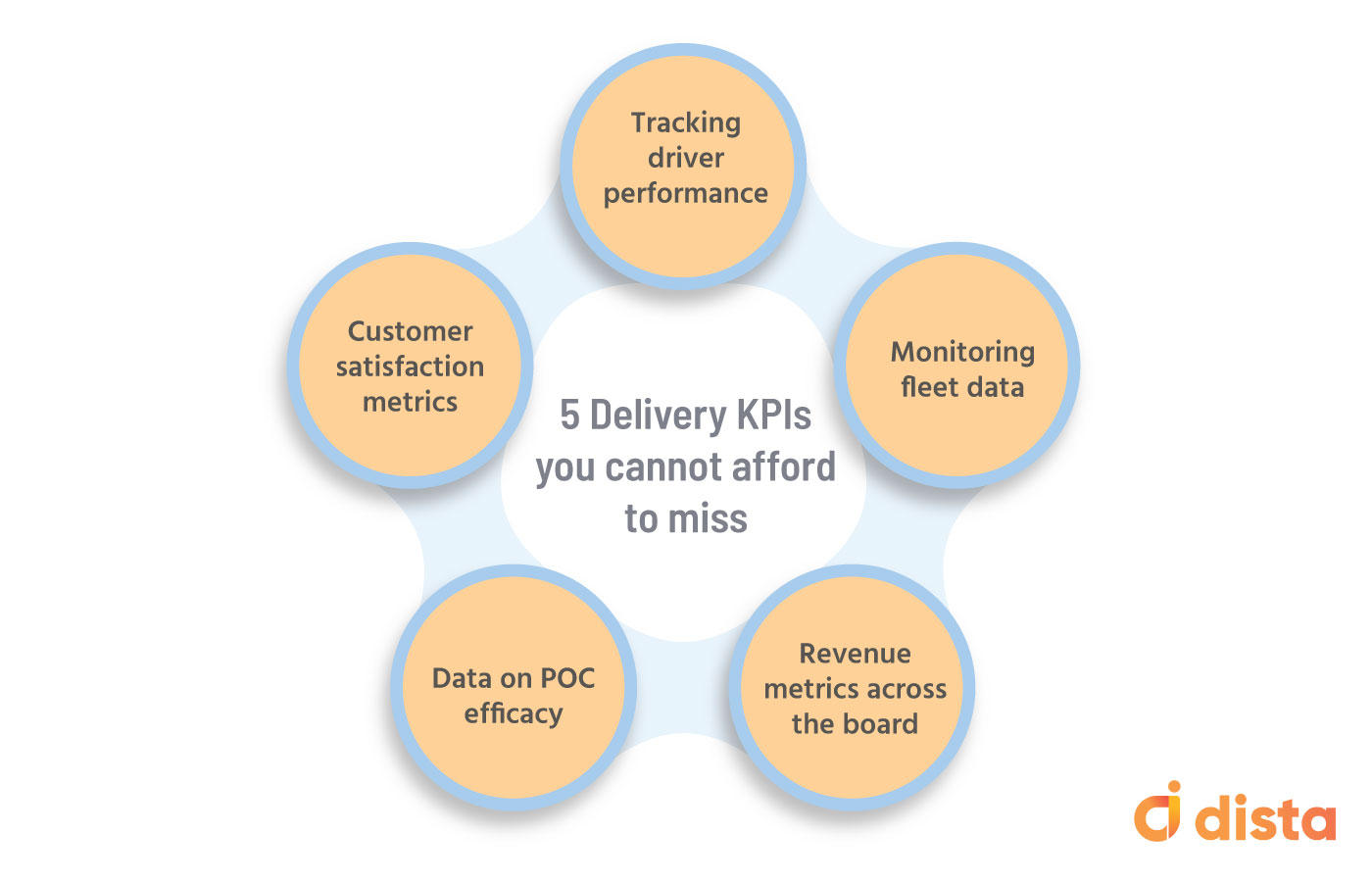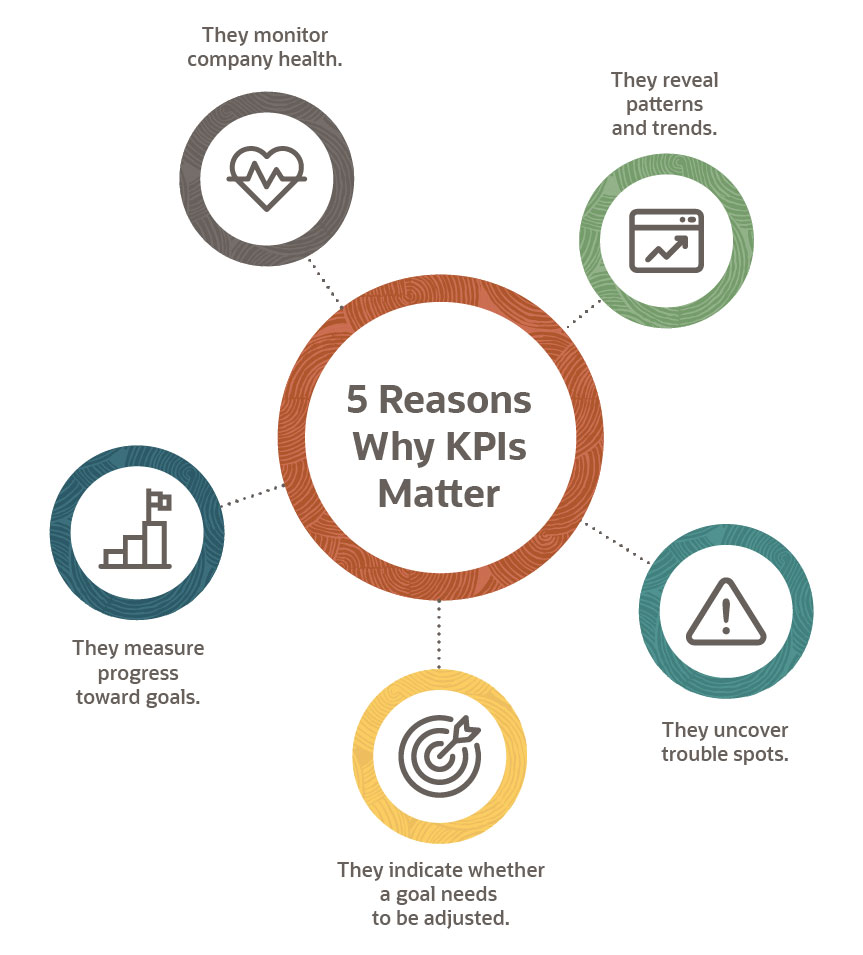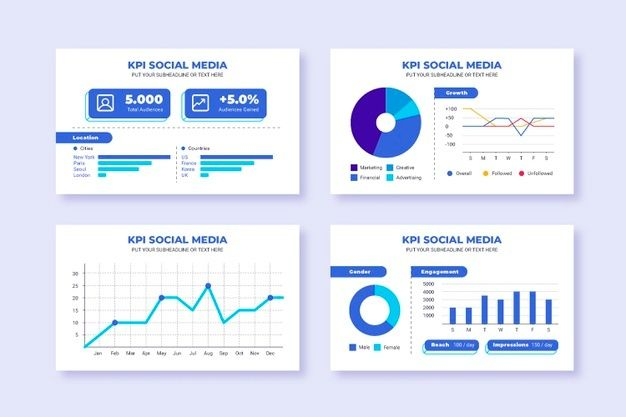KPIs and Metrics Ecommerce Businesses Must Track for Optimising Their Marketing Efforts
How do you know your business is doing well? Or the new growth tactic you applied a month ago is taking your business in the right direction? The answer is having precise data of all activities of your business proceedings.

How do you know your business is doing well? Or the new growth tactic you applied a month ago is taking your business in the right direction? The answer is having precise data of all activities of your business proceedings. Many Ecommerce key performance indicators or KPIs are already available in the industry to help you quickly measure all your business operations.
As per studies, business leaders are 1.4 times more likely to use Ecommerce KPIs metrics, including product search demand to settle on important business decisions when it is hard to measure the results directly.
So, let us learn about KPIs that businesses should focus on to measure and optimise their marketing efforts:
Tracking Ecommerce KPI Metrics in the Marketing Efforts

The presence of many data and analytics tools can overwhelm you if you are not employing some essential key performance indicators. So, to start optimising your marketing strategies, you need to link your business with an analytics platform like Google Analytics.
Also, to make it more smooth, you can use QR codes in the form of website links. And by using Google Analytics tracking tools for your marketing campaign, you can quickly gain insights on many critical KPIs. Also, it is easy and straightforward to create a QR code for your business using any reputable QR-generating website.
It is free of cost and is capable of tracking numerous KPIs for your business. Here, we will be discussing the top KPIs for businesses and how to follow them at all stages of the marketing funnel.
Discovery KPIs: The 1st Stage of the Marketing Funnel

At this stage, you need to focus on your marketing efforts to drive your brand's awareness and generate demand for your services or products. As in the discovery stage, potential customers are just learning about your business; focus on ecommerce metrics and KPIs that reveal all the sources of your new visitors, their visiting frequency, and their interest in engaging with your content. Here are the top Ecommerce metrics and KPIs for the discovery stage:
Sources and channels of traffic
Thoroughly review traffic sources (search engine or domain) and traffic medium (Cost per click, organic search). Also, acquisition device reports can be helpful to check the number of internet users that visit your Ecommerce website through a tablet, desktop, and mobile. At present, around 1/3rd of Ecommerce business sales take place via mobile phones. Therefore several companies use famous phone answering services to ease the operating processes.
Organic Traffic filter
It is one of the vital Ecommerce metrics for online stores that greatly depend on incoming traffic from search engine optimisation and blogs. It shows the number of people finding you through organic search. Tracking organic traffic indicates an online website's performance, authenticity, and authority.
SEO Keyword Positions
Having high-ranking SEO keywords brings more visibility to your online store, attracting genuine customers resulting in higher business revenue. You can use tools like Semrush or SEO dashboard for tracking the keyword rankings over time.
Ad Impressions
It lets you review the number of times users come across your advertisements on Instagram, Facebook, or Google AdWords.
Ad Frequency
It indicates how many times a user has seen your advertisement. Note that higher ad frequency can lead to audience fatigue; hence, add a variety of creativity in ads.
As per studies, 95% of global leading ecommerce businesses state that marketing analytics key performance indicators should be a part of future business goals.
Consideration KPIs: The 2nd Stage of the Marketing Funnel

Website metrics
This stage focuses on increasing the engagement of existing and potential customers to your brand. The most important ecommerce metrics involve incoming engagement through email, traffic, and social media.
Website Sessions
It is a KPI for Ecommerce website visits. It records all the interactions of a particular user within a 30 minutes time frame.
Pages Per Session
Higher pages per session imply that 8 users are exploring your website. Usually, 2 pages per session are considered good.
Bounce Rate
It indicates the user percentage who leave your website after visiting a single page. A lower bounce rate implies that visitors stay for a considerable period on your website and read your content.
Average Session Duration
It refers to the average duration a user stays on your website. It is measured in seconds. Less session duration means your content is relevant to a particular user.
Click-through Rate
You can measure the success of your campaign by tracking CTR. Your content is relevant and valuable to users if they agree to provide their email address or sign up for your site.
As per surveys, global business leaders are 1.7 times more likely to show interest in measuring their marketing efforts against their business objectives.
Email Engagement Metrics
Email List Growth Rate
Email lists on your website should increase over time. To find the status of your email list, you can use the following formula:
(Sum of total new subscribers - unsubscribers) ÷ Total email address numbers on the list
Email Open Rate
It is the measure of users who receive and open email. If it is decreasing, that means users are not finding your email content engaging.
Measure this KPI you can use this formula:
Number of unique opened emails ÷ (total sent emails numbers - total bounced email numbers)
Email Click-through Rate (CTR)
It displays the percentage of email recipients who clicked on certain links that your email contains. Here email CTR represents that your customers are showing interest in your content or product. These metrics signify a high possibility of conversion. To find this use:
(Total number of clicks ÷ total number of email deliveries) × 100.
Email Conversion Rate
It indicates the email recipient percentage that buys some products after clicking the product links on your email. To check this, use this formula:
(sales total through emails ÷ number of emails deliveries) x 10
Email Unsubscribes
Being aware of the rate, the users unsubscribing to emails of your website is helpful for evaluating the growth rate of an email listing. If more users are unsubscribing to your content, then you need to redesign your email marketing campaign to make appealing content for your customers.
Social media metrics
Studies indicate that brands are 1.5 times more likely to make use of metrics learning in their digital marketing efforts and social networking investment in the near future.

Engagement Rate
As per the social channels you are marketing your products, you can use multiple techniques to examine your brand's overall user engagement through social networking sites. Engagement indicators involve metrics like the number of comments, likes, saves, clicks, shares, profile visits, and many others. If your audience finds your content engaging on social sites, then your brand will have a higher social media engagement rate.
Impressions
Your brand needs to get more visibility for the success of your marketing efforts in the social media space. Hence, to check it, keep track of post impressions which refers to the number of times your post is shown on social channels. You can increase impressions if you tag and mention other users in your posts. Also, make use of relevant hashtags to reach a broader consumer base.
Clicks
With a click-through metric, you'll be able to determine how many users are clicking on your posts, implying their interest in your content.
Followers
Growth in followers implies your brand is capturing the attention of more potential customers. To determine the performance of your social posts, compare your engagement rate to your following growth.
Conversion KPIs: The 3rd Stage of the Marketing Funnel
It comes among the top Ecommerce metrics that help you in uncovering sales strategies and trends that can convert users into regular buyers. Following are the Ecommerce KPI metrics for conversions:
Cost of Customer Acquisition (CoCA)
It assists you in evaluating your marketing efforts' value. To find out, add the costs of services, overhead, marketing, and software and divide it by the total number of acquired consumers.
Return on Ad Spend (ROAS)
Find which advertisement campaigns are returning better value for your investments.
Calculate it by dividing the revenue to cost, and use your money in the best way. If some of your sales happen outside of your website, use CRM and Google Analytics integration to track them as well.
Number of Online Transactions
It is a crucial ecommerce metrics for evaluating sales KPIs. Ensure you run a monthly and yearly analysis. And monitor the success rate of offered discounts.
Average Order Value (AOV)
By keeping track of your AOV, you can drive sales trends and increase the company's income over time. Hence, to boost AOV for your business, you need to consider bundle sales or incorporate an upsell widget for the promotions of related items when the buyer is about to check out.
Rate of Cart Abandonment
You can get an overview of cart abandonment rates on your website by looking up the platform. To minimise it, you can use remarketing advertisements or send emails to remind your customers about their abandoned cart to regain their interest.
Ecommerce Conversion Rate
The conversion rate for your business refers to the user percentage that converts into customers. The standard Ecommerce site conversion rate goes around 1.6%. To learn about the conversion rate for your brand, use this formula:
Total number of sales divided by the total number of sessions
Sales generation by channel
Analyse all the channels to comprehend which ones are worth your investments. And where you can scale your business.
Retention KPIs: The 4th Stage of the Marketing Funnel
One of the crucial points for developing and scaling your brand is "Repeat Business."
Studies say that even an increase of 5% in the rates of customer retention can bring a revenue increase up to 25-95% for an Ecommerce brand. Also, it is much affordable to retail in the long term and serves existing buyers in place of striving for new ones. It also lets brands build customer loyalty.
Following are the top Ecommerce metrics and KPIs that you need to consider for customer retention:
Average Customer Lifetime Value (CLV)
The customer lifetime value for a brand refers to a cornerstone KPI. You can know it by determining the total amount that a buyer spends on your brand in their lifetime. Ensure that CLV for your band must be higher than your per customer acquisition cost. The following formula would be helpful for getting an idea of CLV:
AOV multiplied by Purchase frequency
Repeat Purchase Rate
It involves the portion of repeat buyers from your entire consumer base. This portion refers to satisfied buyers that help in increasing your brand profitability. Hence we can say that it is one of the essential Ecommerce metrics.
The general formula to separate out repeat buyer proportion is:
The number of total buyers that have purchased products from your brand more than once / total number of consumers
Analysis of Order Gap
The metric depicts the average duration a single customer takes to make two separate purchases. Having insights on order gaps is vital for the regulation of marketing automation for your brand.
Having the knowledge on hand, you can automatically make your customers recall about purchasing from your brand again after the average duration between transactions completes.
The formula you can use to calculate the order gap is
365/ Average duration between purchases (Purchase frequency metric)
Return on Investment (ROI)
ROI is a clear indication of the success of marketing efforts. The metrics that shareholders and CEOs want to learn about to understand whether the marketing efforts are working.
To calculate ROI, you can use a simple formula:
Gross profit/ total percentage of investment
However, you must note that the outcomes of your ROI formula can differ depending on the way your brand runs its operations.
The Bottom Line
So these words are some of the essential ecommerce metrics and KPIs you can focus on to check the performance of your marketing efforts. However, you will need to regularly screen and update key performance indicators to keep up with the competition. Make sure you are recording data from all applied KPIs and metrics using a single spreadsheet. As being a business persona, you need to keep an eye on all your marketing efforts and performance.
Author Bio
Akshay is a digital marketer and a startup enthusiast exploring the myriad avenues of everything marketing. At Beaconstac, he enables companies to bridge the gap between the physical and digital worlds through the use of custom QR codes.







